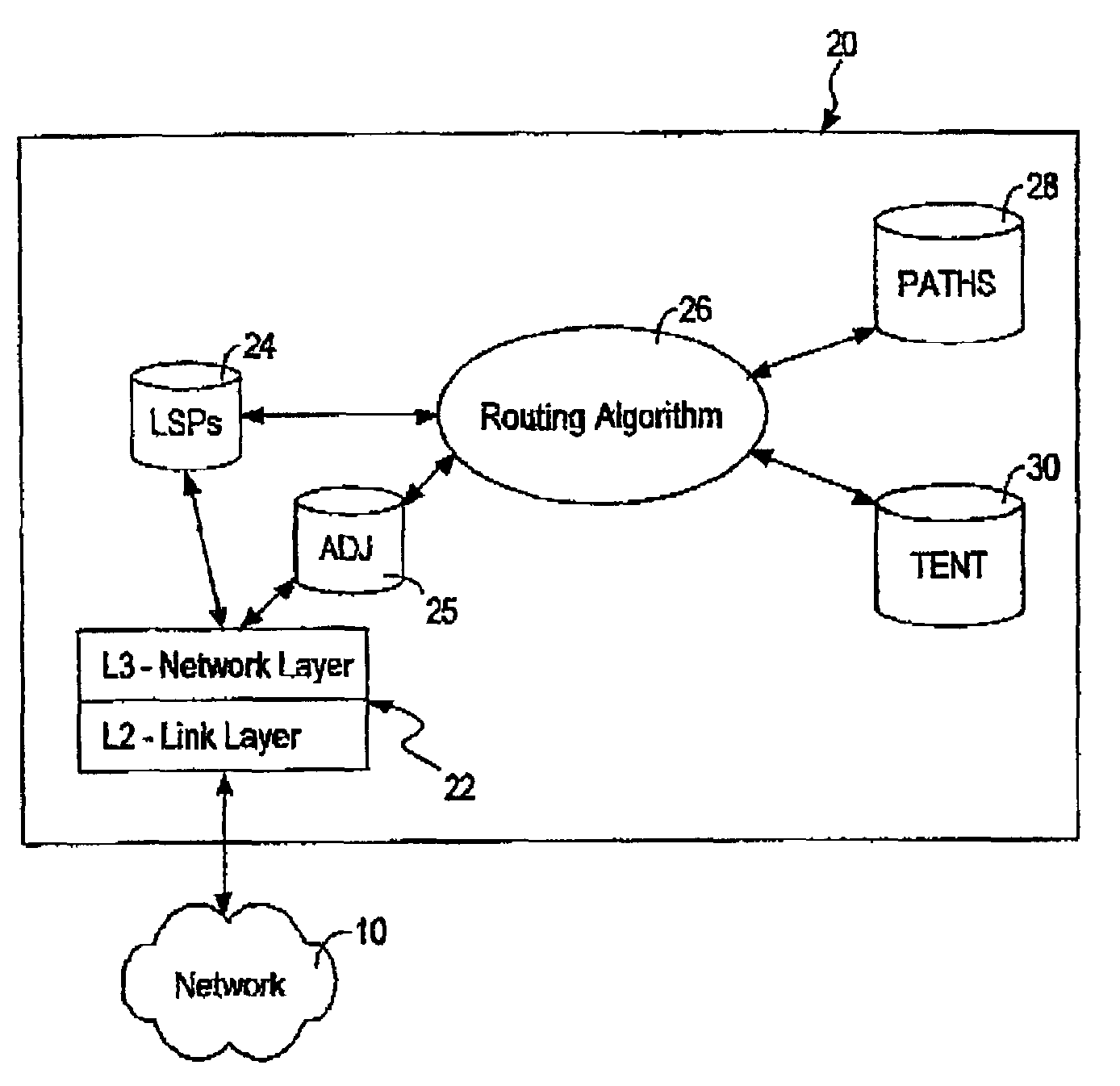Routing method and apparatus for optimising auto-tunnelling in a heterogeneous network
- Summary
- Abstract
- Description
- Claims
- Application Information
AI Technical Summary
Benefits of technology
Problems solved by technology
Method used
Image
Examples
Embodiment Construction
of Route Determination
[0106]A description of the key aspects of the modified SPF algorithm according to the invention is now described. The description is illustrated by way of example with reference to FIGS. 3 to 22 which show how the TENT and PATHS databases of node 1 of FIG. 1A (which is therefore the parent system SELF) are populated in the context of network 100. For the purposes of this example, the assumed relative costs (distance or metric) of each network section are annotated on FIG. 1A between adjacent nodes.
[0107]In the embodiment described below with reference to FIGS. 3 to 22, SPF calculations are performed for Dual Router 1, following RFC 1195 and the proposed extension to the SPF algorithm in accordance with U.S. patent application Ser. Nos. 10 / 039,432 and 10 / 032,417.
[0108]Firstly, the two databases, PATHS and TENT as described herein above are used, where PATHS stores information relevant regarding a directed graph of shortest paths, and TENT stores information on t...
PUM
 Login to View More
Login to View More Abstract
Description
Claims
Application Information
 Login to View More
Login to View More - R&D
- Intellectual Property
- Life Sciences
- Materials
- Tech Scout
- Unparalleled Data Quality
- Higher Quality Content
- 60% Fewer Hallucinations
Browse by: Latest US Patents, China's latest patents, Technical Efficacy Thesaurus, Application Domain, Technology Topic, Popular Technical Reports.
© 2025 PatSnap. All rights reserved.Legal|Privacy policy|Modern Slavery Act Transparency Statement|Sitemap|About US| Contact US: help@patsnap.com



